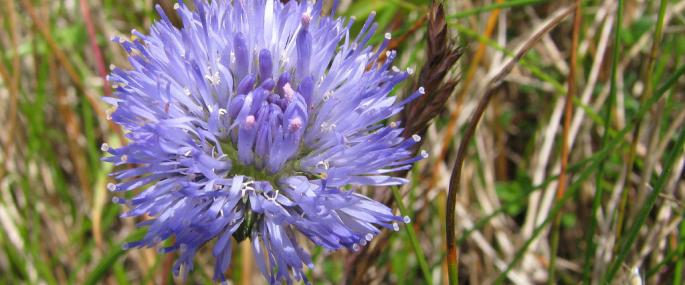The rounded, blue flower heads of Sheep's-bit can be found in dry, grassy places such as heaths, grasslands and cliff tops. Most common near the sea, it can often be seen growing in large numbers, carpeting the ground with its fluffy-looking flower heads from May to September. Sheep's-bit is a popular garden plant, especially for areas like rockeries, wild gardens and even old sinks - anywhere there is sandy, free-draining soil and plenty of sun.
Like many of our native plants, Sheep's-bit is an excellent source of nectar and pollen for all kinds of insects including bumblebees and butterflies. To encourage wildlife into your garden, try planting native flower species in your borders to provide a 'nectar-cafe'. To find out more about wildlife-friendly gardening, visit our Wild About Gardens website: a joint initiative with the RHS, there's plenty of facts and tips to get you started.
